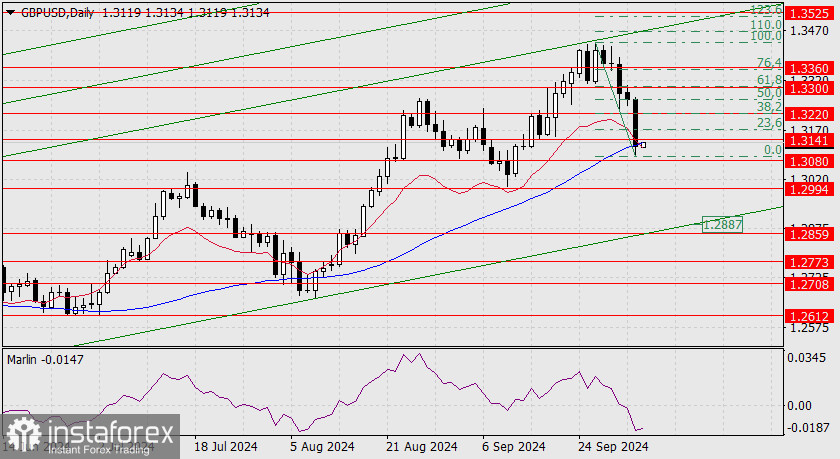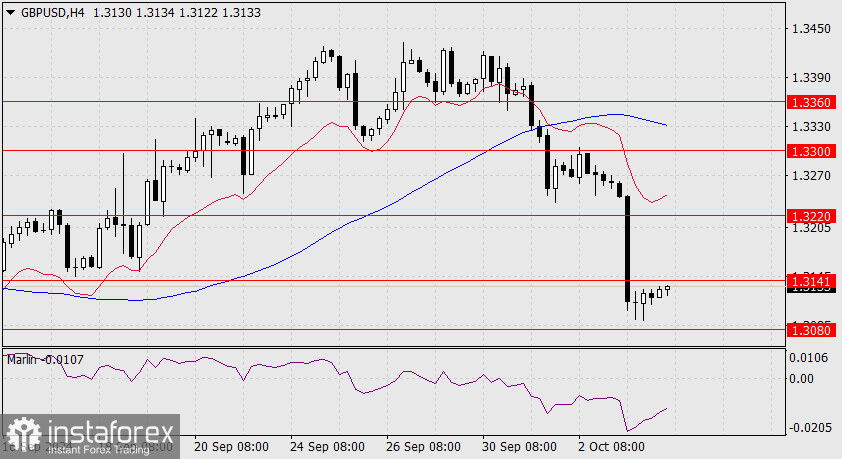Bank of England Governor Andrew Bailey's concerns about rising inflation due to increasing oil prices were passed on to market participants, who inferred from his words a potential slowdown in the pace of rate cuts. As a result, the pound lost 143 pips yesterday. Weak PMI data for September added to the pessimistic mood.

On the daily chart, the price has broken through all possible support levels, including the support of the MACD line. However, because of this, the price needs to take a break now, as the pound is falling ahead of the market, and during this pause, it could potentially rise above the resistance level of 1.3220, which coincides with the 38.2% correction of the entire drop since September 26. The correction is shallow, but breaking above this level would also mean surpassing the September 6 high, which could pave the way for a rise to 1.3360. This scenario becomes likely if today's close is above the MACD line (above the 1.3141 level). The Marlin oscillator attempts to turn upward, but its readings are currently ineffective.
After yesterday's tension release, the pound is expected to move more in sync with the rest of the market. The day's main event will be the release of U.S. employment data. This day could be pivotal for the British currency. In the event of a negative outcome, the price may head toward the support of the embedded price channel line near 1.2887.

On the four-hour chart, the price is moving within the range of 1.3080-1.3141. The Marlin oscillator is turning upward with strength, which could signal an attempt by the price to break above the nearest resistance. However, U.S. employment data may change these short-term signs. We are waiting for the data release.
 English
English 
 Русский
Русский Bahasa Indonesia
Bahasa Indonesia Bahasa Malay
Bahasa Malay ไทย
ไทย Español
Español Deutsch
Deutsch Български
Български Français
Français Tiếng Việt
Tiếng Việt 中文
中文 বাংলা
বাংলা हिन्दी
हिन्दी Čeština
Čeština Українська
Українська Română
Română

